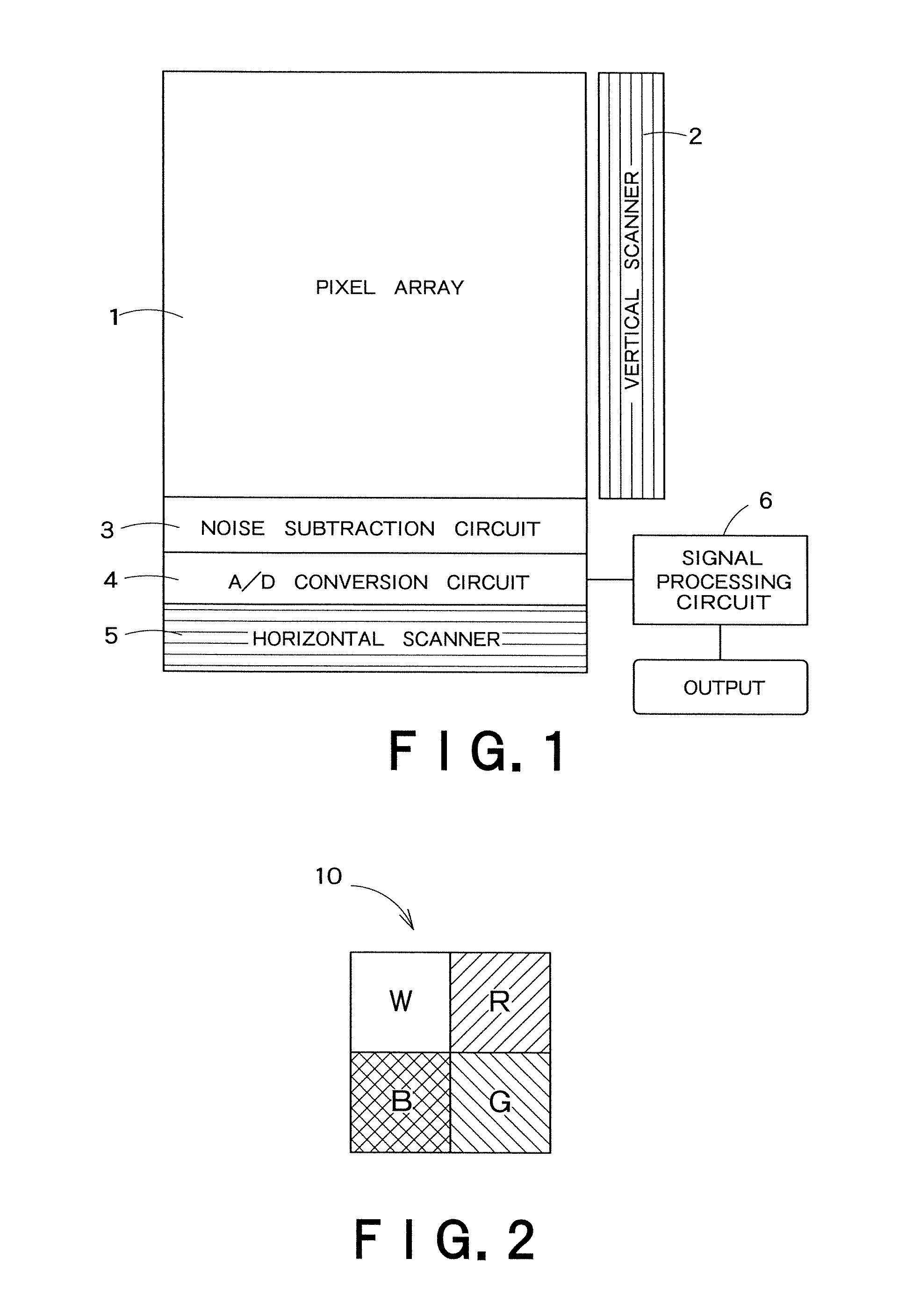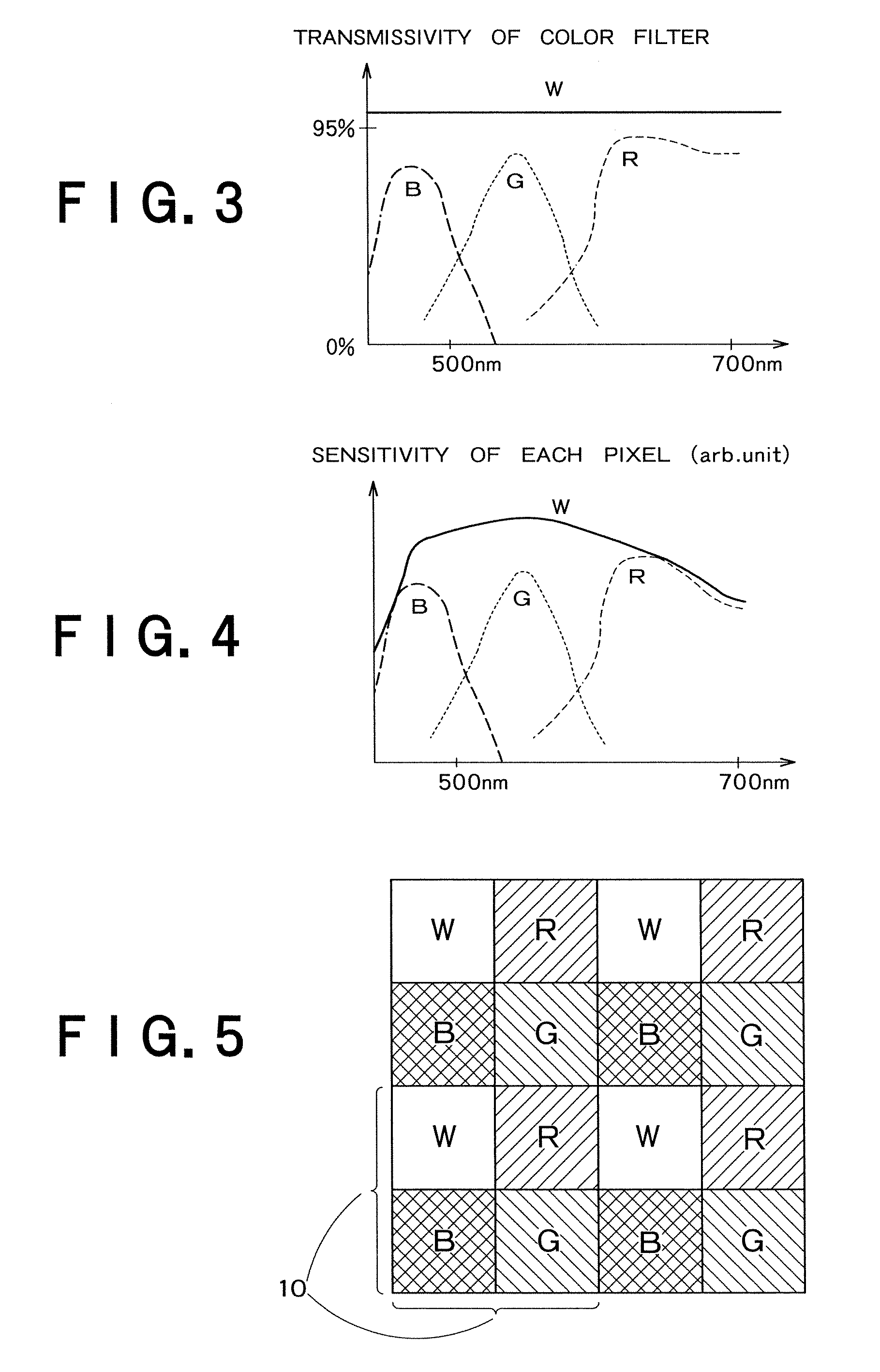Solid-state image sensor
a solid-state image and sensor technology, applied in the field of solid-state image sensors, can solve the problems of difficult realization, noise in the pixel with low luminance, and long signal processing time, and achieve the effect of superior color reproducibility
- Summary
- Abstract
- Description
- Claims
- Application Information
AI Technical Summary
Benefits of technology
Problems solved by technology
Method used
Image
Examples
first embodiment
[0094]FIG. 1 is a block diagram showing a schematic configuration of a solid-state image sensor according to an embodiment of the present invention. The solid-state image sensor depicted in FIG. 1 includes a pixel array 1 in which a plurality of pixels each having a photoelectric converting element are arranged in a matrix form, a vertical scanner 2 that sequentially supplies a driving voltage to respective rows in the pixel array 1, a noise subtraction circuit 3 that performs processing to remove noise included in an imaging signal subjected to photoelectric conversion in each pixel, an A / D conversion circuit 4 that performs A / D conversion on the imaging signal output from the noise subtraction circuit 3, a horizontal scanner 5 that sequentially selects and reads A / D-converted imaging data in accordance with each column, and a signal processing circuit 6 that performs later-explained signal processing to the imaging data.
[0095]The signal processing circuit 6 receives imaging data f...
second embodiment
[0121]A second embodiment explained below is characterized in that a white color data value W of a pixel W is color-separated into three pieces of color data R, G, and B.
[0122]Although a solid-state image sensor according to the second embodiment is configured like the embodiment depicted in FIG. 1, the second embodiment is different from the first embodiment in a processing operation of a signal processing circuit 6. A difference from the first embodiment will be mainly explained hereinafter.
[0123]Even in the second embodiment, a pixel block formed of three rows and three columns with a pixel W being arranged at the center is judged as a basic unit for clearly explaining color separation processing. An actual basic unit of the pixel block is not restricted to a configuration of three rows and three columns.
[0124]FIG. 11 is a block diagram showing an example of an internal configuration of the signal processing circuit 6 according to the second embodiment. The signal processing circ...
third embodiment
[0141]A third embodiment is characterized in that white color data is used at a low illuminance to perform restoration processing of a color signal.
[0142]Although a solid-state image sensor according to the third embodiment has the same configuration as that depicted in FIG. 1, the third embodiment is different from the first and the second embodiments in a processing operation of a signal processing circuit 6. Differences from the first and the second embodiments will be mainly explained hereinafter.
[0143]In the third embodiment, a pixel block formed of three rows and three columns with a pixel W being placed at the center is likewise judged as a basic unit in order to facilitating understanding color separation processing, and an actual basic unit of the pixel block is not restricted to a structure formed of three rows and three columns.
[0144]FIG. 17 is a block diagram showing an example of an internal configuration of a signal processing circuit 6 according to the third embodimen...
PUM
 Login to View More
Login to View More Abstract
Description
Claims
Application Information
 Login to View More
Login to View More - R&D
- Intellectual Property
- Life Sciences
- Materials
- Tech Scout
- Unparalleled Data Quality
- Higher Quality Content
- 60% Fewer Hallucinations
Browse by: Latest US Patents, China's latest patents, Technical Efficacy Thesaurus, Application Domain, Technology Topic, Popular Technical Reports.
© 2025 PatSnap. All rights reserved.Legal|Privacy policy|Modern Slavery Act Transparency Statement|Sitemap|About US| Contact US: help@patsnap.com



